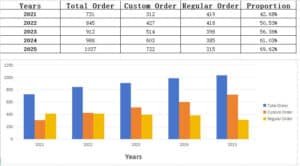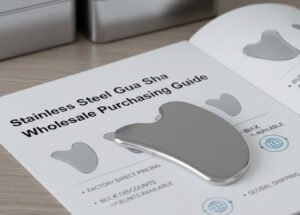Facial gua sha therapy is currently gaining widespread attention and popularity for its cosmetic benefits. However, traditional body gua sha therapy, when applied to the entire body, is the most effective treatment for various ailments. Outside of China, gua sha therapy’s recognition for cosmetic purposes slightly surpasses traditional medical treatments, but in China, it’s more commonly used as a treatment for specific illnesses.
Today, we’ll provide a detailed introduction to gua sha techniques, precautions, and benefits for different body regions. Use this information as a guide to choose the guasha method that suits your needs.
- Preparation for Full Body Gua Sha
- Detailed explanation of Body Gua Sha
- Post – After Gua Sha Care Tips
- Conclusion
Preparation for Full Body Gua Sha
An old Chinese saying goes, “Sharpening the knife does not delay the chopping of wood.” This means that to do something well and quickly, you must thoroughly prepare beforehand. This applies to Gua Sha. Before performing guasha on your body, please confirm the following:
- Tool Preparation: You must have the appropriate Gua Sha tools and the appropriate guasha oil or lubricant.
- Environment Preparation: Ideally, choose a warm, quiet environment.
- Physical Examination: Check the area to be Gua Shaed for wounds, acne, and other signs of fever or cold.
Ensure all preparatory steps are complete before beginning guasha. This can lead to counterproductive results.
Detailed explanation of Body Gua Sha
1. Neck Gua Sha
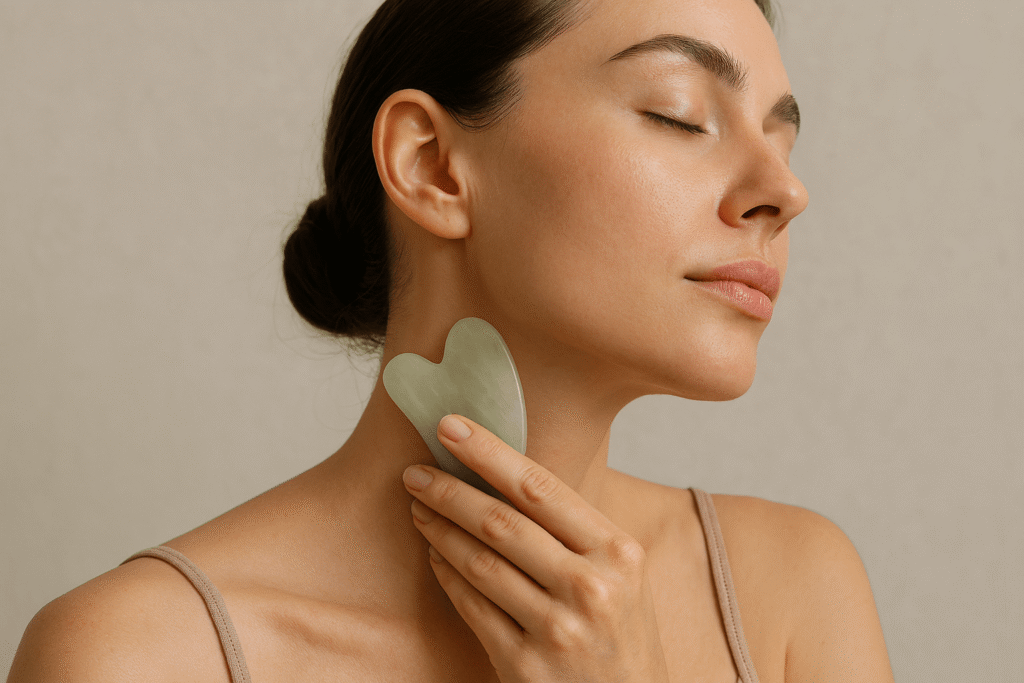
- Suitable symptoms: Neck discomfort, stiff neck, and stiff shoulders and neck. It is also effective for treating headaches caused by imbalanced Qi and blood circulation.
- Gua Sha Direction: Perform from top to bottom, focusing on the muscle groups on both sides of the spine. Repeat 10-15 times on each side.
- Precautions: Use moderate pressure, depending on your individual needs. Avoid the cervical spine and the spine. Avoid compressing the carotid artery.
- Benefits: Clears meridians, improves blood flow to the brain, and relieves shoulder and neck muscle soreness.
From: A study in The Journal of Pain (2011) indicated that neck scraping can effectively relieve chronic neck pain. [1]
2. Shoulder Area Gua Sha
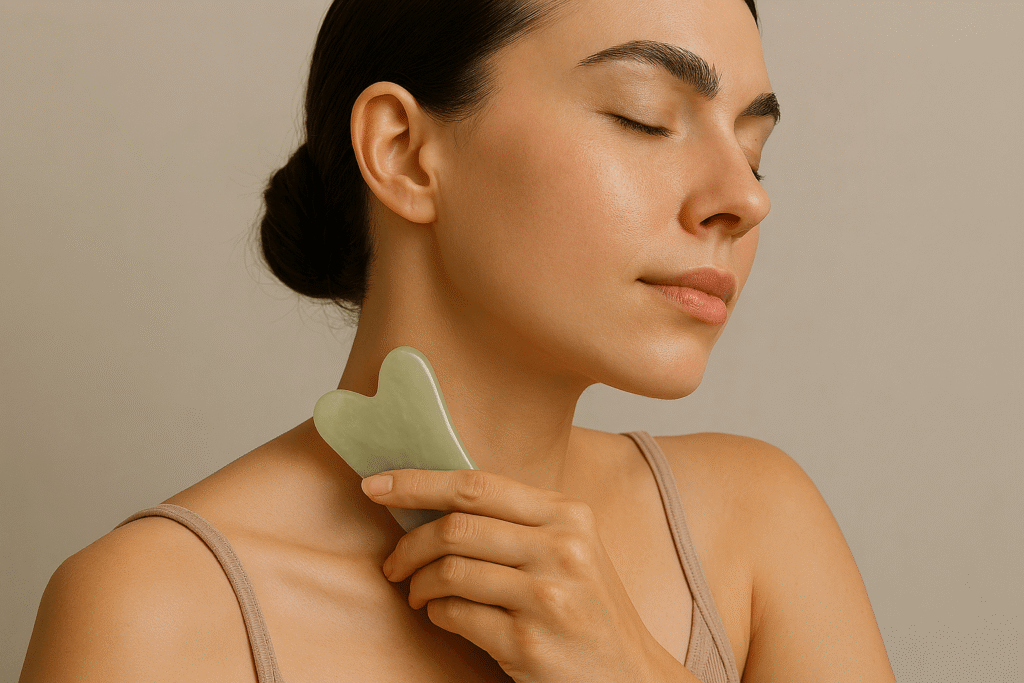
- Suitable Symptoms: Frozen shoulder, shoulder muscle or fascia discomfort
- Gua Sha Direction: Move from inside to outside, top to bottom. For example, move from the shoulder blade to the outside of the triceps, or from the upper shoulder to the arm area. Repeat 10-15 times for each area.
- Precautions: Ensure the gua sha area is free of trauma or skin inflammation such as acne. Avoid bone areas when guasha. The intensity of the gua sha depends on your individual condition; avoid excessive gua sha.
- Benefits: Relaxes shoulder muscles, improves blood circulation, and effectively relieves discomfort caused by frozen shoulder and other conditions.
From: The Chinese Medicine Herald points out that scraping the bladder meridian on the back helps regulate the autonomic nervous system and enhance immunity.
3. Back Gua Sha
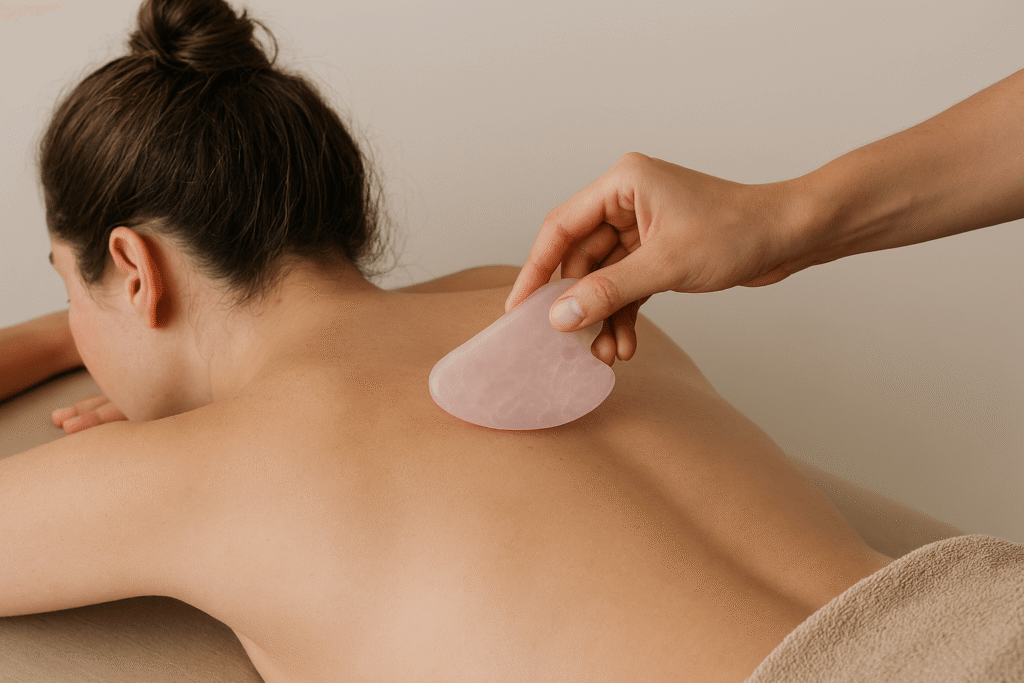
- Suitable for: Lower back fatigue, lumbar muscle strain and pain, and weakened immunity.
- Gua Sha Direction: Scrape the muscles along both sides of the spine from top to bottom. Repeat 10-15 times per side.
- Precautions: Due to the specific area, you may need assistance with the Gua Sha. Avoid the spine area when doing this.
- Benefits: Helps strengthen internal organs and enhance immunity.
From: The International Journal of Traditional Chinese Medicine and Materia Medica shows that chest scraping has a positive effect in improving respiratory system function.
4. Waist Gua Sha
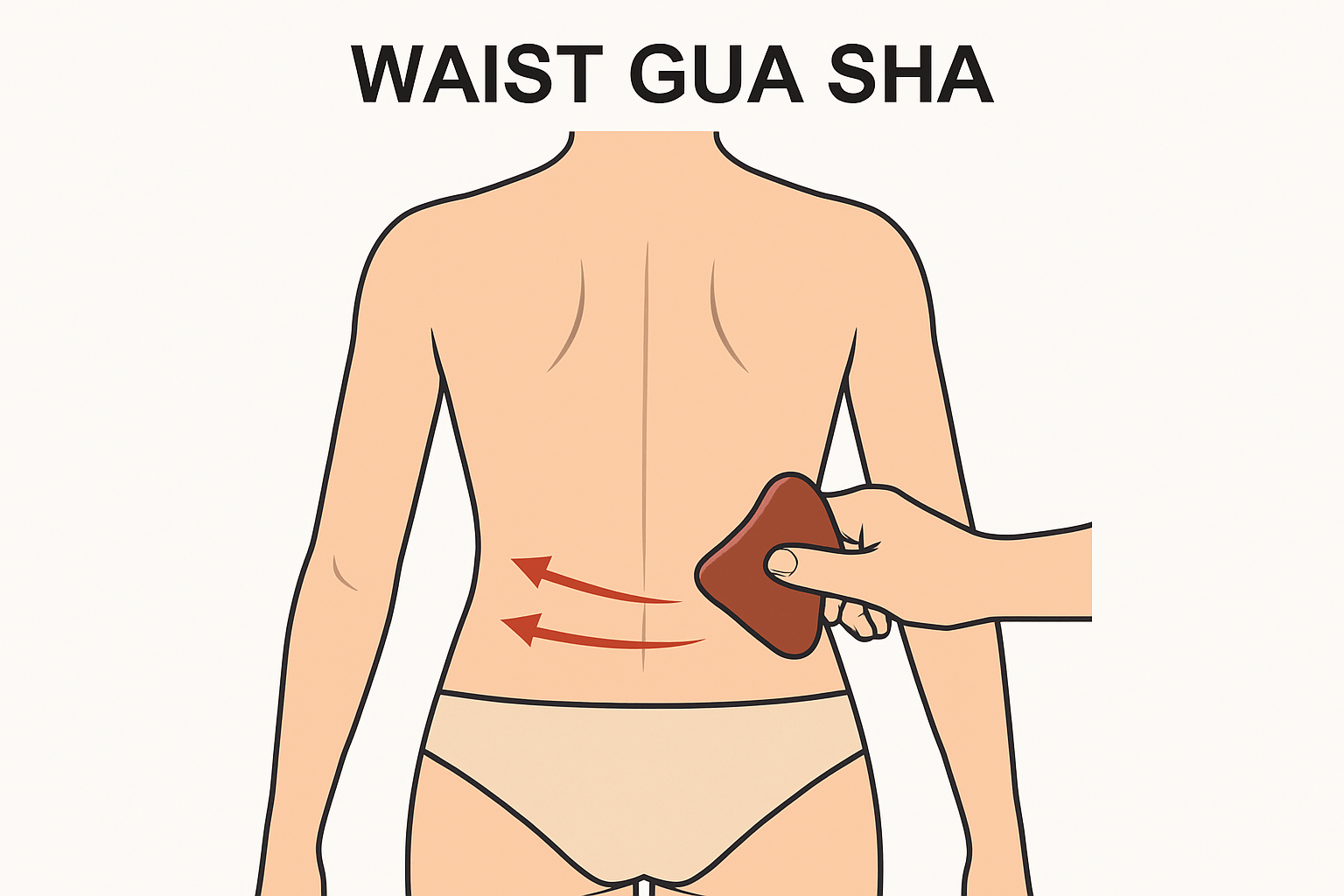
- Suitable symptoms: Lower back pain, lumbar muscle strain, and kidney deficiency.
- Gua Sha Direction: Start from the side of the spine and work your way outwards, diagonally downward. Repeat 10-15 times.
- Precautions: Because the abdominal area is relatively tender, avoid excessive force when gua sha. Especially avoid gua sha the kidney area.
- Benefits: Relieves lower back pain and repairs lumbar muscle strain.
From: The “Chinese Journal of Traditional Chinese Medicine” mentioned that abdominal scraping can enhance the gastrointestinal nerve regulation function.
5. Abdominal Gua Sha
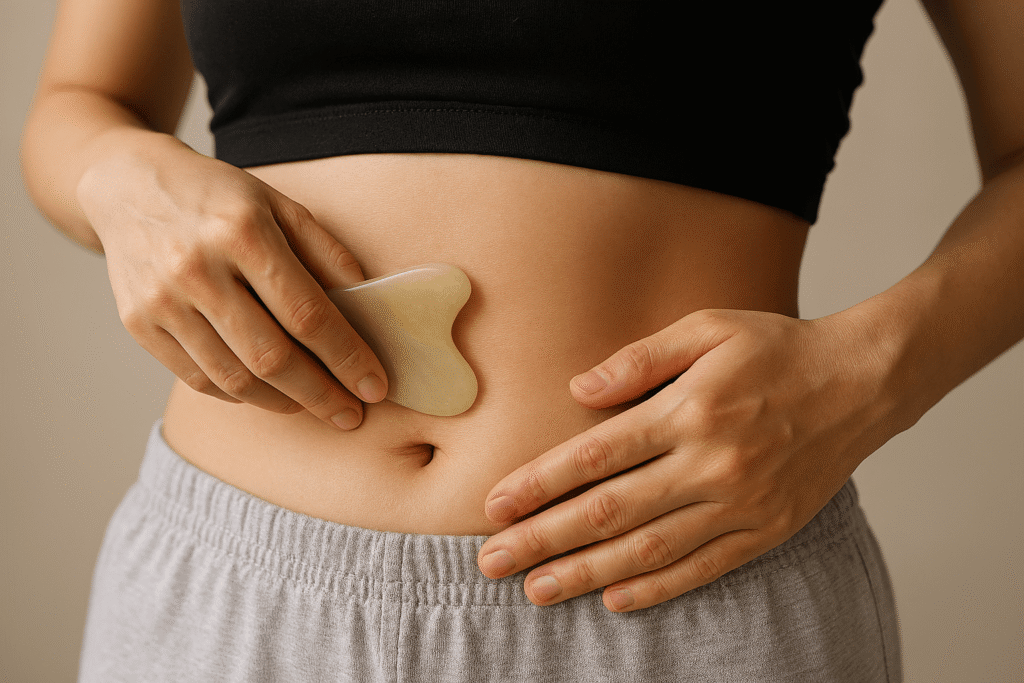
- Suitable symptoms: Indigestion, bloating, and menstrual pain.
- Gua Sha Direction: Apply the gua sha technique in a clockwise motion across the abdomen. Repeat 10-15 times.
- Precautions: Gua Sha should not be performed within one hour after a meal, as it may cause indigestion, nausea, or even vomiting. Pregnant women should avoid abdominal Gua Sha.
- Benefits: Promotes gastrointestinal motility, improves digestion, and aids sleep.
From: Clinical observations in Traditional Chinese Medicine indicate that scraping the waist can significantly relieve tension in the lower back muscles caused by prolonged sitting.
6. Chest Gua Sha

- Suitable symptoms: Depression, shortness of breath, and breast obstruction.
- Gua Sha Direction: From the center of the sternum, work your way out to both sides. Repeat 10-15 times.
- Precautions: Pay attention to the amount of force applied. As chest muscle mass varies greatly from person to person, be careful not to injure the sternum. Women should be especially cautious when using Gua Sha on their chests, avoiding the nipples.
- Benefits: Improves mood, soothes the liver and regulates qi, and helps alleviate breast obstruction.
From: Experimental data from scraping therapy indicate that upper limb meridian stimulation can help relieve tendonitis and carpal tunnel syndrome.
7. Upper Limb Gua Sha
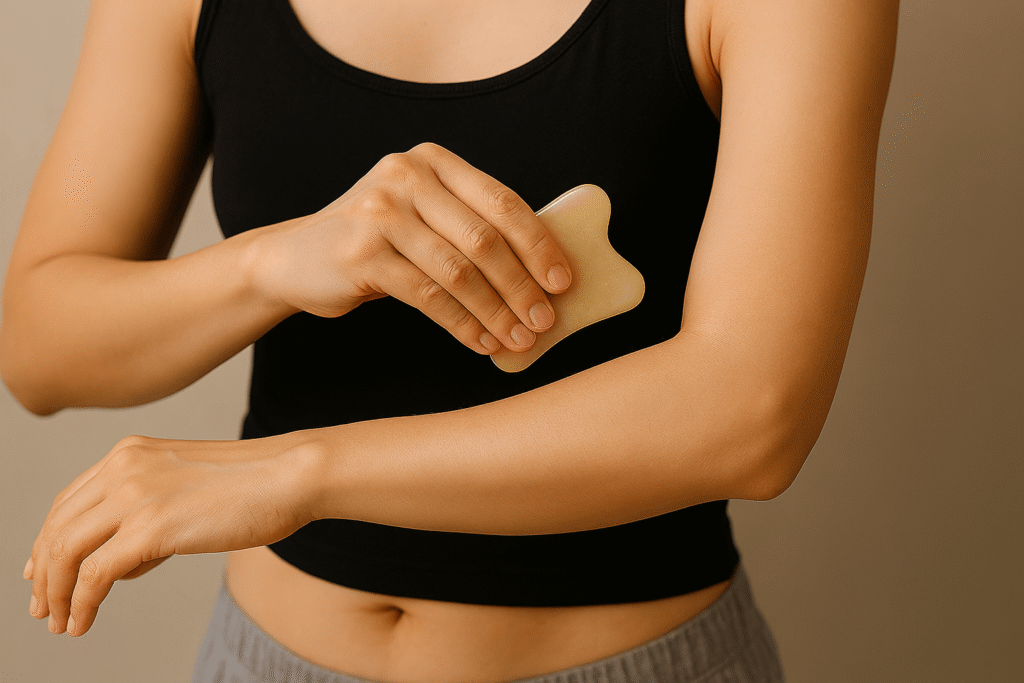
- Suitable symptoms: Arm pain, joint stiffness, and tendonitis.
- Gua Sha Direction: Scrape along the upper arm to the forearm, then from the forearm to the fingertips. Follow a top-to-bottom approach. Repeat 10-15 times.
- Precautions: Avoid bony prominences and bruises or open wounds to avoid secondary injury.
- Benefits: Improves Qi and blood circulation in the upper body, relieves upper limb fatigue, and helps alleviate inflammation such as tendonitis.
From: Evidence-Based Complementary and Alternative Medicine (2020) mentioned that scraping the spleen meridian area of the calf can significantly promote peripheral circulation. [2]
8. Lower Limb Gua Sha (Thighs, Calfs, and Feet)
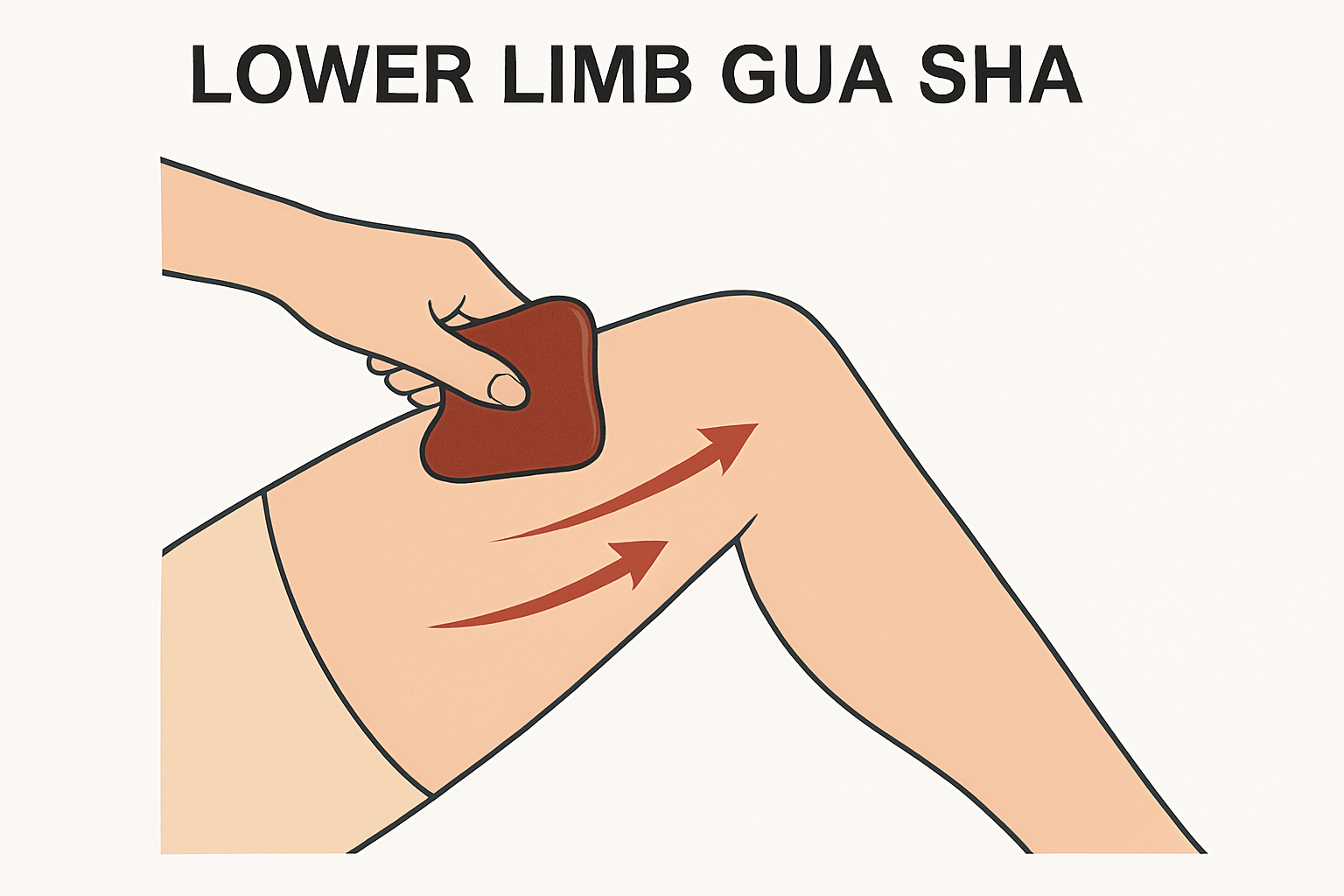
- Suitable Symptoms: Leg edema, muscle soreness, and early symptoms of varicose veins.
- Gua Sha Direction: Scrape in a steady downward motion from the base of the thigh toward the toes. Apply greater pressure to areas with dense muscle mass, such as the thigh and calf muscles, for a more effective treatment. This treatment is particularly suitable after exercise, such as running or playing basketball.
- Precautions: Avoid areas with bones and protruding veins.
- Benefits: Promotes blood circulation in the lower limbs and reduces edema. Deep muscle and tendon massage repairs sports injuries and promotes lactic acid metabolism.
From: “Research on Foot Reflexology” points out that combining scraping with the principles of plantar reflexology can enhance overall body vitality.
Post – After Gua Sha Care Tips
If you don’t take good care of yourself after Gua Sha, it can cause harm to your body. Please follow the following recommendations:
- Rehydrate, preferably with warm water. Gua Sha can cause fluid loss, so you need to replenish fluids to maintain electrolyte balance.
- Keep your surroundings clean and warm. For several minutes after Gua Sha, your pores remain open, allowing viruses and other harmful air to enter and cause illness.
- Avoid showering immediately to prevent harmful viruses in the water from entering your body.
- Maintain a light diet and avoid foods high in oil or salt.
- Do not perform Gua Sha again within a short period of time. Wait until the redness subsides before attempting again.。
Conclusion
Body gua sha is a gentle form of self-care. Proper use can enhance daily life and promote good health. However, it’s important to note that body gua sha differs from facial gua sha in that it’s a different discipline. Body gua sha requires more specialized techniques and may even require assistance, which can take more time and effort to learn.
We recommend that you experience gua sha at a professional institution and seek the advice of a professional practitioner to maximize the benefits and minimize risks.

